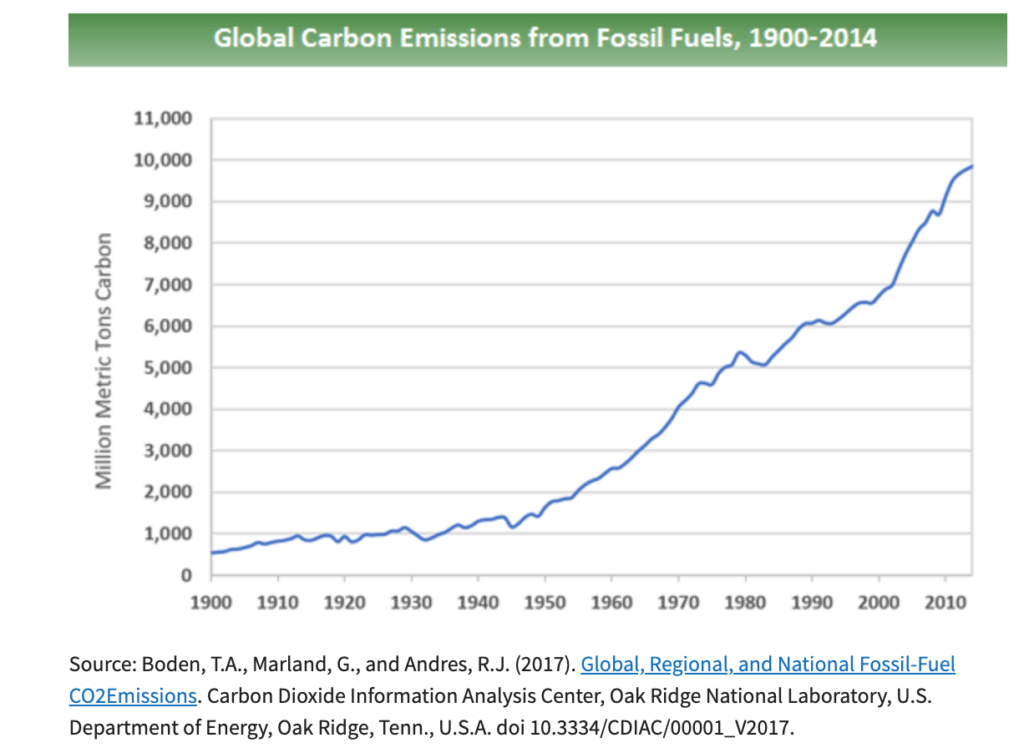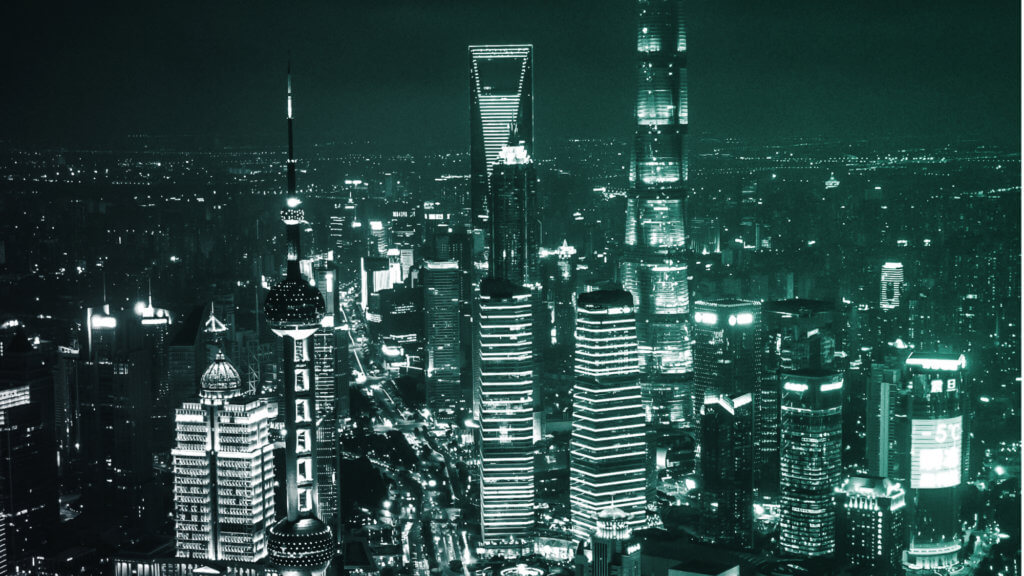Digital Twins are a breakthrough technology that utilises existing cutting-edge innovations such as IoT, AI, Blockchain, VR, APIs and even Big Data. The aim is to create an artificial simulation of an existing asset, or estate, to leverage data to improve reality by increasing efficiency and spot potential failures before they happen.
The energy sector thrives on efficiency, digital twins hold the potential to maximise every drop of efficiency out of a facility and bring the output to the limit. With an exact digital replica, managers can spot breakdowns and inefficiencies 30 to 60 days ahead of the event, drastically reducing periods of higher consumption. In nuclear energy facilities, it can cost millions to bring a reactor back online after a technical fault, the cost saving is categorically undeniable.
Fighting Climate Change
Emissions, and carbon output are at an all-time high in recent years. Reports estimates levels to be at over 10,000 tonnes from fossil fuels. In response to this, targets have been set globally, to counter this meteoric rise. The Paris Climate Agreement is one that has received critical acclaim from climate change experts, as it aims to reduce global warming to below 2 degrees centigrade.

One way that experts are aiming to fight climate change is by decarbonising the planet, the UN have recently indicated that by 2030, they predict that zero-carbon solutions could be competitive in sectors representing over 70% of global emissions. Zero carbon solutions include electric cars, solar powered generators, biomass heaters, wind turbines, solar photovoltaics, etc.

From Conception to Reality
Digital twins are an industry-busting, disruptive technology that provide unprecedented visibility. Innovators have developed the capabilities to model interconnectivity and complete systems that mirror physical set-ups to fully comprehend data. The aim of this is to reduce energy consumption by spotting data anomalies with energy usage. The potential is enormous in this regard, studies have shown that the deployment of digital twins can reduce global carbon emissions by 20% by 2030.
Industries with valuable use cases include manufacturing. Math2Market is one such case study, where they have developed a solution called GeoDict a digital twin platform capable of testing and ratifying new materials for the use in the aviation, nautical and automotive industries. Their digital twin continuously tests the suitability of new, lighter, more cost-effective materials for usage within new aeroplanes, cars and other vehicles. This new solution not only helps reduce expenditure on R&D but it drags down the carbon output of the industry by helping produce lighter, more fuel-efficient vehicles. This is done by assisting manufacturers in their search for lighter materials which consume less fuel during transit. A vital plight, as currently air travel accounts for over 12% of global carbon output.

GeoDict is also capable of testing materials used in batteries, and fuel cells. Experts input the data on the composition of internal components, and the digital twin tests a virtual battery using the data against existing variables. The outcome is a more sustainable method of storing energy, and an uptake in usage of EV’s and carbon neutral buildings. Adding to the rapidly growing energy storage industry which is expected to attract $620 billion of investment by 2040.

Smart Buildings and Smart Cities
Decarbonisation through digital twin utilisation is also possible through environmental virtual modelling. This solution bridges the gap between the virtual and real word by constantly imputing data collected from IoT devices. The virtual twin then optimises the efficiencies available by locating energy anomalies, which identifies the exact route to decarbonisation. Nanyang Technological University (NTU) have recently utilised digital twins to yield an energy saving of more than $3.9 million a year. The 1.1 million square meter space has been transformed into one of the world’s first smart cities. This concept has helped them commit a reduction of 8.2 million tonnes of carbon yearly.
Smart Cambridge and Cambridge Centre for Smart Infrastructure and Construction (CSIC) have been working on a joint venture to develop a digital twin model of the city to reduce carbon emissions for car travel. This will consist of introducing short routes and cut throughs that reduce the time taken for cars to travel, in the aim of decarbonising the city by use of the virtual replica of the environment. A vital effort as road traffic in the UK has increased from 255 billion miles travelled in 1990 to 328 billion miles in 2018, an increase of 29%.
Digitalising Shanghai
Digital cities are the next step in the evolution of this innovative modelling solution. Shanghai is one example of such city where the technology has been implemented to create precise virtual representations. Local firm, 51World have been drafted in to virtually model 3,750 sq km which includes iconic landmark structures such as the Oriental Pearl and the Shanghai Tower, as well as countless other buildings. The company uses drones and satellites to continuously map structures, waterways, roads and footpaths in real-time, to create an identical data-based version which improves services, planning developments, optimising buildings’ systems, and monitoring traffic flow.
The possibilities are limitless for this innovative technology, and the realisation that digital twins may hold the key to unlocking the potential of the combined technology is starting to happen. The future looks bright with smart cities becoming ever more present. To learn more, get in touch with the experts.



